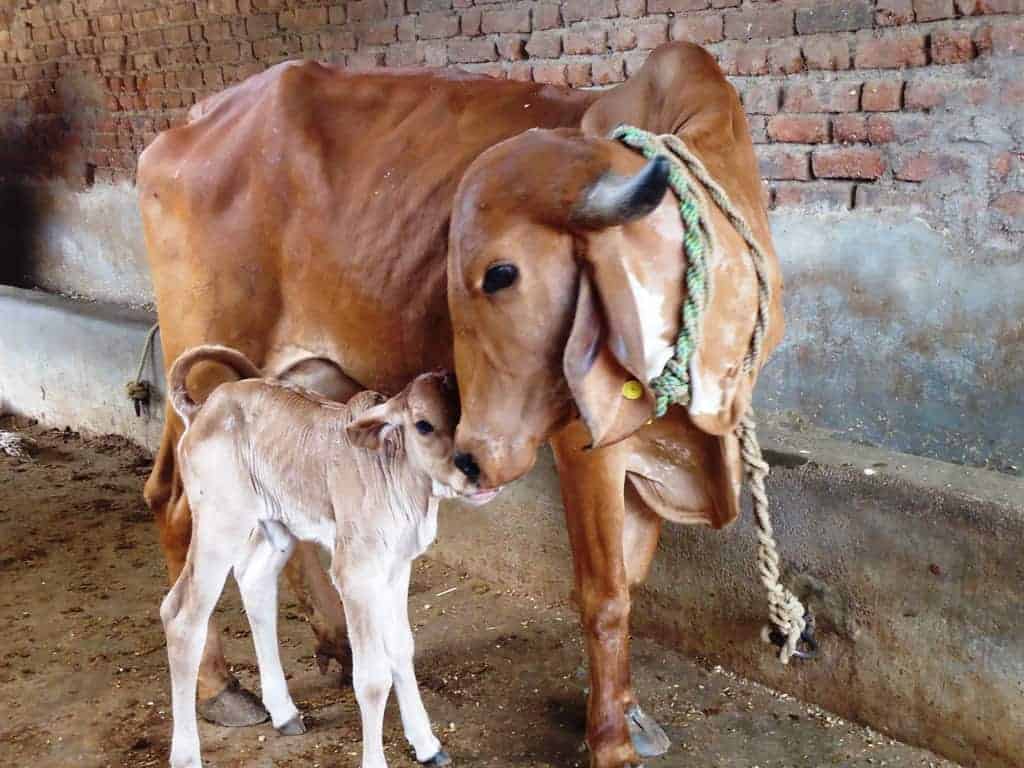
Milk Fever Cases Must be Treated Rationally
What is milk fever in Cattle?
Milk fever is typically associated with calving. It is not due to deficiency of calcium but a temporary problem where calcium from the body is not mobilized to make for losses in colostrum synthesis. Due to this serum calcium goes down rapidly and the animal starts showing typical symptoms. As a rule, The majority of clinical cases (75%) therefore would be recorded within 3 days of calving (sometimes even 24 to 48 hours before calving) and around 10-15% cases between 4 to 7 days after calving and 5% between day 8th to day 15 after calving. Very rarely classical milk fever cases would be seen after 15 days of parturition. The time of calving is the most important evidence for diagnosis. In India, milk fever is more frequent in buffaloes compared to cows.
Diagnosis of Milk Fever
It is not difficult to diagnose milk fever as symptoms are prominent. Three phases have been described. In the first phase, muscle twitching is common. The rectal temperature may be slightly higher in this stage. In the second stage, the animal is unable to stand and is in sitting position. Muscle twitching is still recorded but the rectal temperature is low. Due to lower cardiac output, the extremities like ear lobe and feet are cold. On auscultation heat sounds are weak. In the third stage, the animal is found lying on its side, the temperature is subnormal, heartbeat slow and weak sounds, animal unable to swallow hence a lot of frothy saliva may be voided.
The face is hard due to constipation. Usually, these symptoms start after udder is full of milk or after first milking. In cows where colostrum synthesis has started before calving and udder is full of milk. Such cows may show symptoms of hypocalcaemia and one of the prominent signs is uterine inertia (that is no uterine contraction).
Milk Fever Treatment
The most critical part of the treatment is ‘SPEED’. Cattle milk Fever should be regarded as emergency and treatment must be started at the earliest. If time is lost in treatment the animal may remain lying and would not be able to get up even after calcium administration due to muscle/nerve damage. In some cases, it may lead to what is commonly called ‘Downer’s’. At this stage, it is very difficult to treat. Ideally, after diagnosis treatment should start within one hour. In case the veterinarian is not available to administer intravenous the farmer should attempt intramuscular injection of dicationic calcium (such as Sancalvet). The drug of choice for uncomplicated cases is calcium borogluconate to be given intravenously. Usually, the response is dramatic, even with half of the dose the animal would get up and start feeding.
How many times calcium should be injected and what should be the dose are highly debated questions?
From my own experience first choice of drug is calcium borogluconate 300-450 ml administered intravenously, slowly over a period of 30-45 minutes. A slow injection is important to avoid heart complications. Rapid administration of calcium will cause cardiac fibrillation for which antidote is magnesium sulphate intravenous.
In case the animal has responded to intravenous with partial injection (say half of the dose), I usually stop the intravenous injection and the balance injection I give sub-cutaneous. When calcium is given intravenous most of it is excreted in the urine. There are reports that immediately after intravenous injection of calcium the serum calcium levels may still be lower, but the injection stimulates the process of mobilization of calcium. The subcutaneous injection will ensure longer calcium absorption in the blood. This also leads to a lowering of relapses. Another drug that is available in the market is a combination of calcium, phosphorus, magnesium, and glucose. When to prefer combination depends on the stage of the disease.
When an animal is in the third stage that is in lying position (unresponsive to external stimuli) and muscle twitching is still persistent, I prefer calcium plus magnesium and phosphorus injection, half dose intravenous and half subcutaneous. In case the animal responded well to the calcium borogluconate but there is a relapse after 12 to 24 hours in that case also combination should be preferred. I always administer a follow up dicationic or colloidal calcium injection to ensure persistent calcium stimulus for mobilization. There is no rationale for giving calcium injections repeatedly, it is a waste of resources. Any classical case should settle down with the second injection. I have been able to get a good response with Vitamin D3 injection in refractive cases of milk fever. Hypocalcaemic cows into calving will start uterine contraction immediately after calcium administration.
Calcium injections are also the most abused injection in animals used irrationally. Calcium injections are not galactagogue hence should not be used to increase milk yield or easy let down of milk. It works only when there is a specific indication.
How to prevent milk fever in cows?
Prevention of milk fever is the general observation that the same animal might suffer from milk fever in subsequent calving. In the case of large farms, if milk fever cases are more than 2% in a year, this calls for a prevention strategy. The current recommendation is that during dry period cows/buffaloes should be given different types of the mineral mixture, which is less of cation and more of anions, whereas after calving this needs to be reversed. There is a product available in the market (Biochlor) which has been found to reduce the incidence of milk fever and other transition associated metabolic disorders. But remember one thumb rule, do not feed lactation mineral mixture during the dry period and vice versa.
